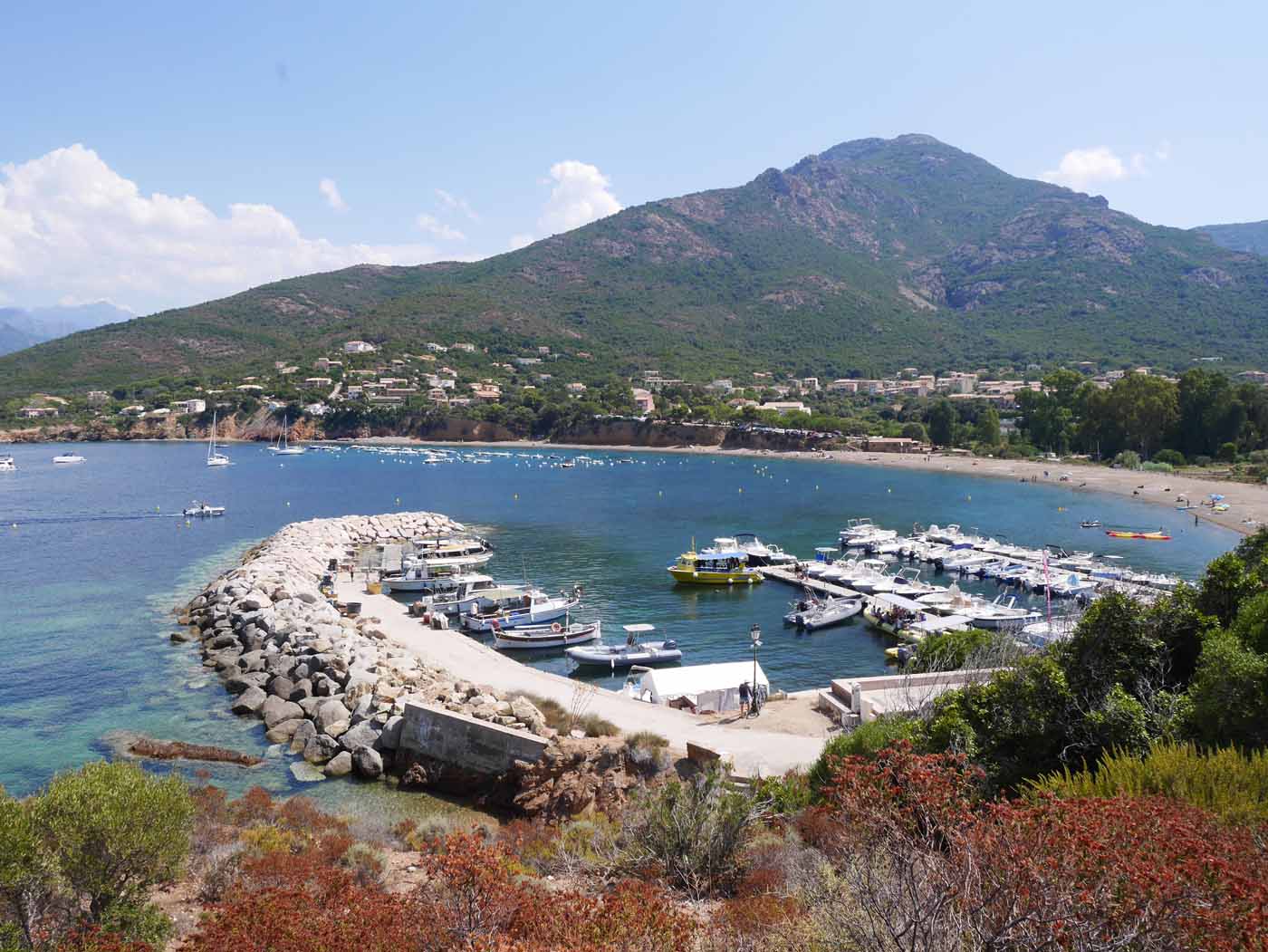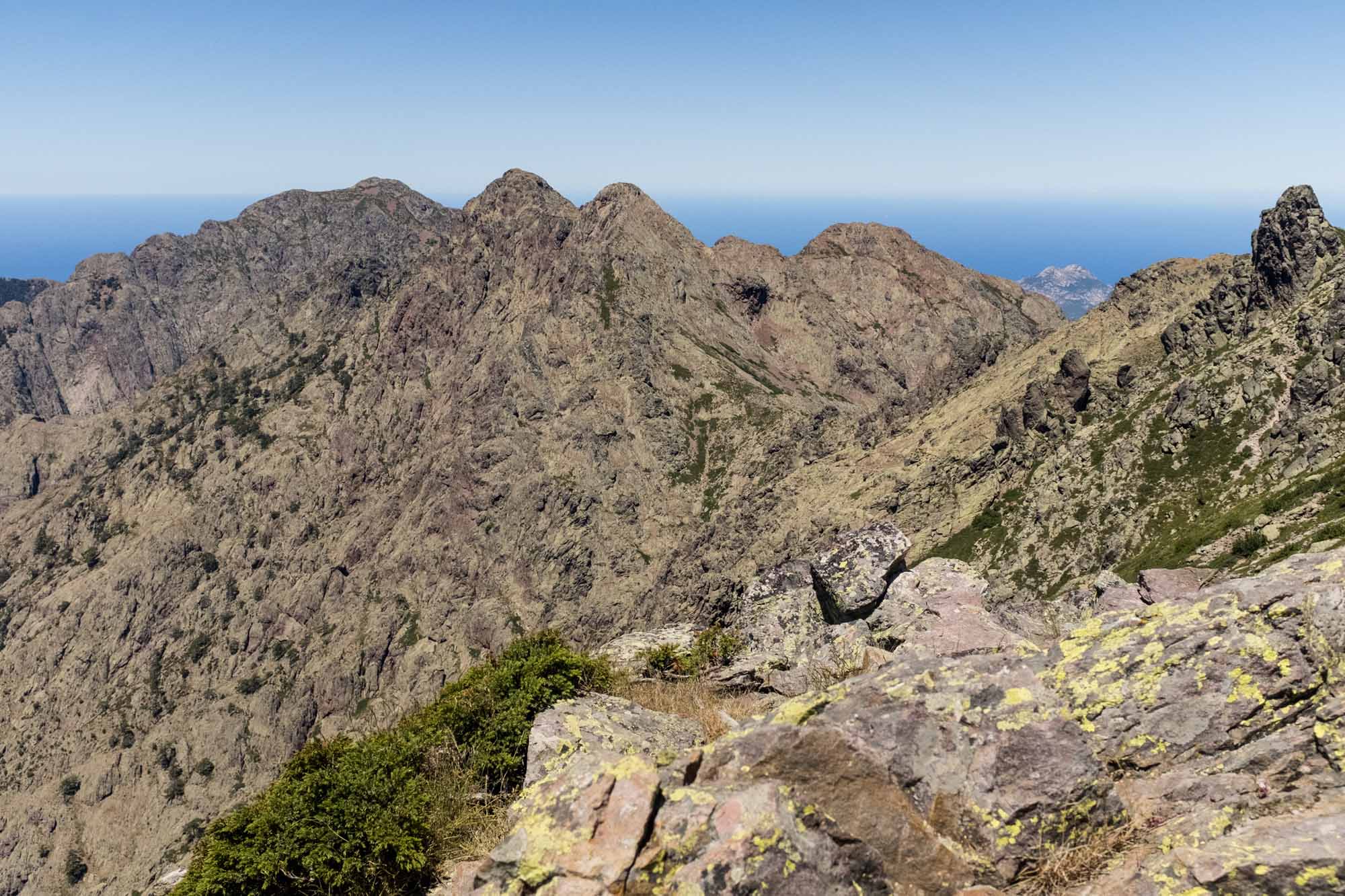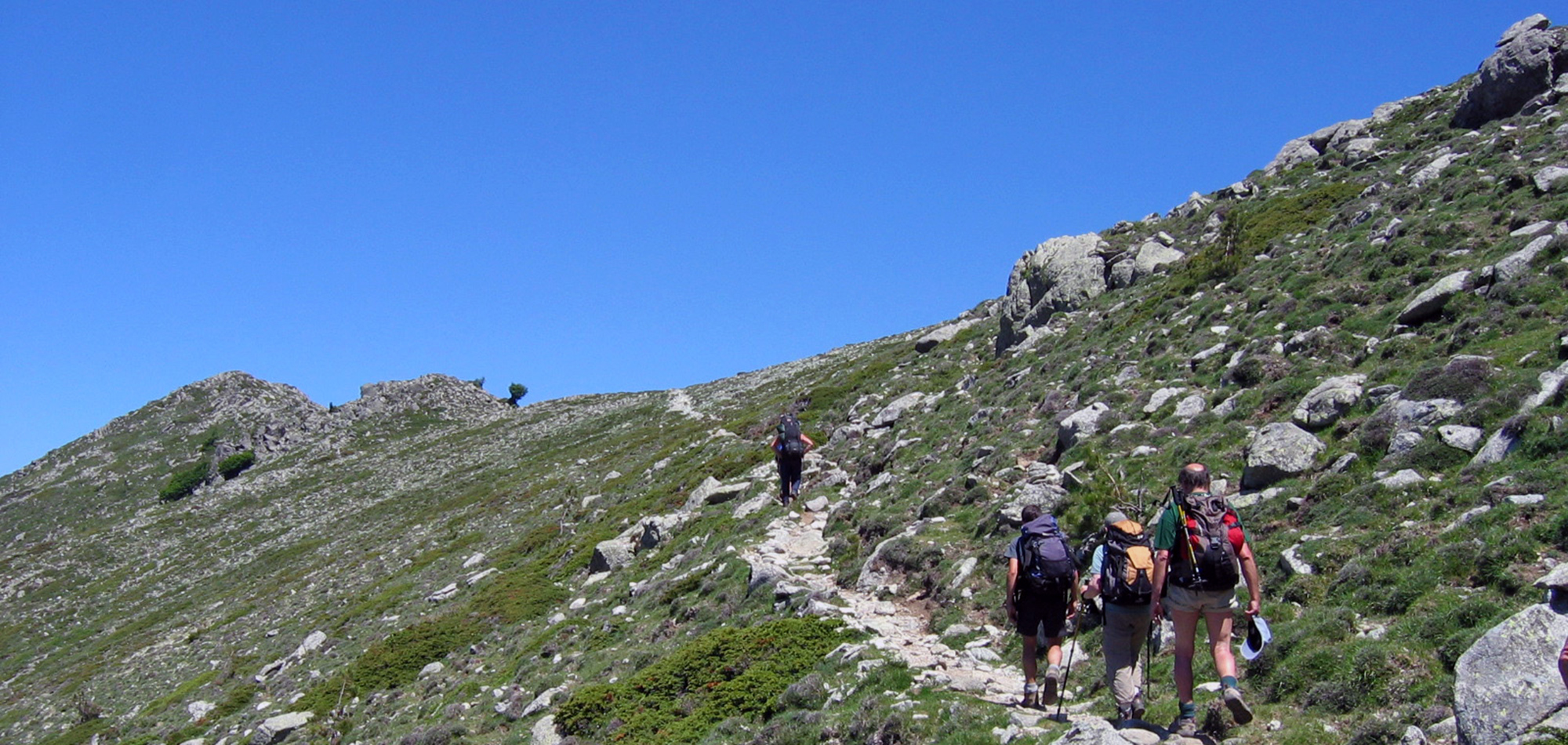
From Calenzana to Bonifatu
Early morning transfer from Calvi to Calenzana. The walk begins in the maze of narrow streets of the village where, in 1732, a terrible battle took place, the heroine of which was a bee. However, the village is best known as the starting point for the GR20. Following the red and white marks, the path leads to Bocca U Corsu (577 m), which offers the first panoramic view of the Bay of Calvi and the immense Figarella plain, stretching as far as the foothills of the Bonifatu cirque. The route passes through the old Balinese gardens, a veritable heritage of the micro-region. Here, an olive tree; there, a fig tree, a vine... All will accompany you as you make your way up the river, where you can enjoy a refreshing swim. At the end of this stage, the immense Bonifatu forest will welcome you with its high altitude coolness.
From Bonifatu to Tuarelli
You will leave the ‘forest of blessings’ by following the Mare e Monti Nord itinerary. The path rises gently through a varied forest of oak, ash, chestnut and pine. This ancient path was once used by shepherds and their flocks to reach the vast Falosorma valley. To reach this destination, you'll have to cross the Bocca di Bonassa (1175 m) and Bocca di Luca (589 m) passes, before skirting the wide Prezzuna valley and descending into the valley of the River Fango. Since 1977, this exceptional region has been classified as a biosphere reserve by UNESCO, in recognition of its remarkable island ecosystems. It is in this natural sanctuary that you will spend two nights, in perfect harmony with unspoilt nature.
The Fango valley
This is a circular walk that allows you to discover the traces of the past. You'll start your walk on the banks of the River Fango, which you'll follow along its course, lined with centuries-old olive trees and juniper woods, a tree emblematic for its many virtues and uses. The path then descends into thick scrubland, where moss covers dense, twisted arbutus trees, allowing little light to filter through. At the turn of a clearing, you'll see a ruined house with its bread oven and walled garden, as well as the Saint-Georges chestnut grove, which owes its name to the presence of a chapel that no longer exists. Views of the immense walls that enclose the valley add a majestic dimension to the scenery. Your discovery would not be complete without a visit to the hamlet of Manso, situated on the edge of the ‘natural pools’ formed by polychrome rocks.
From Manso to Galéria
This is the last hike on the Mare e Monti Nord, with part of the stage running along the river as far as the Ponte Vecchio. This Genoese bridge was used to cross the river to reach the remains of an early Christian sanctuary, of which the walls of the 10th-century chapel of San Pietro remain. The path then climbs up through the scrubland and soon overlooks the majestic Fango delta. The immense mouth of the river, made up of multicoloured stones, is transformed into a wetland crossed by numerous river arms flowing into the sea. The red, blue and green hues intertwine like a kaleidoscope. Then, suddenly, at the bend in the path, the Gulf of Galéria appears, with its salt tower, village and port. It's here, in this little seaside resort, that your stay comes to an end. Enjoy a swim in the sea or a snack before boarding the taxi back to Calvi.
Programs have been drawn up according to the latest information available at the time of writing: imponderables are always possible and situations beyond our control may alter the course of the program.















